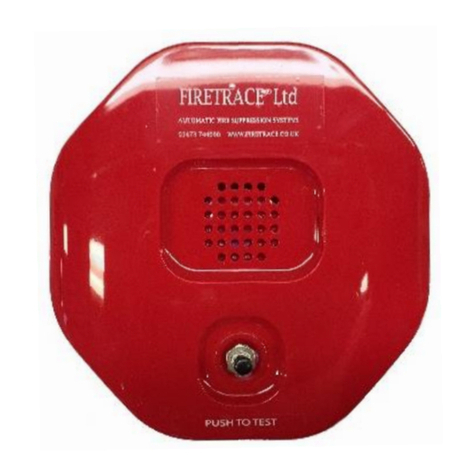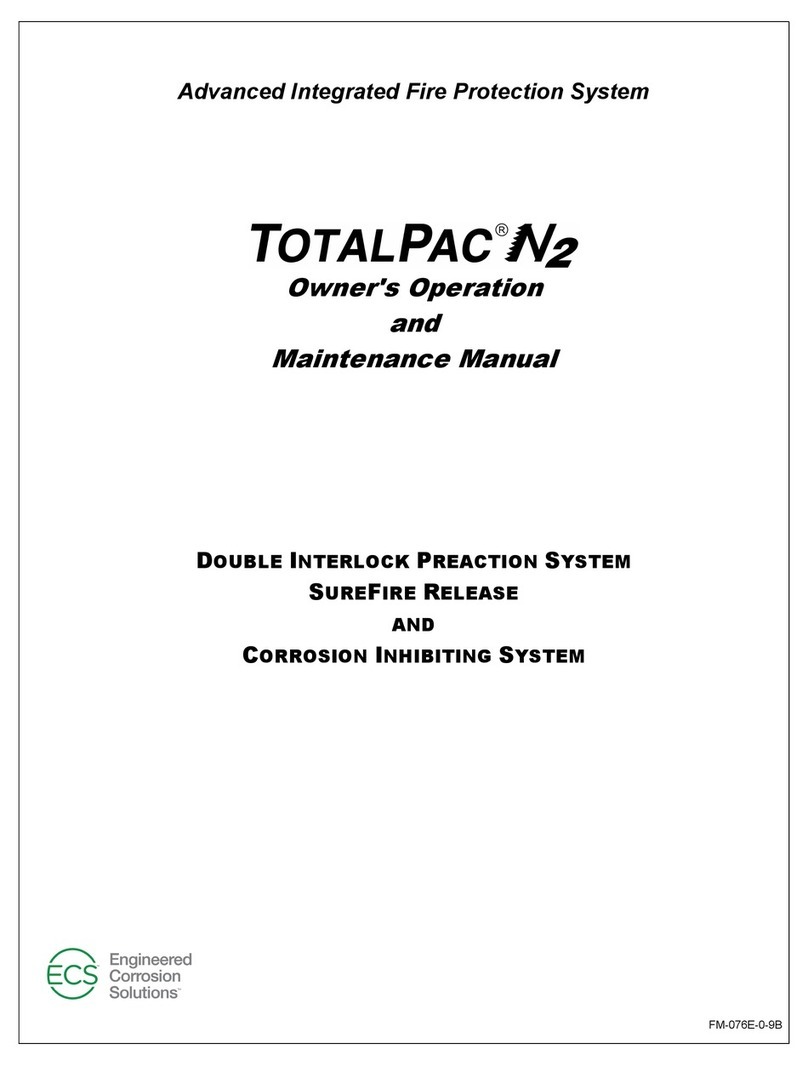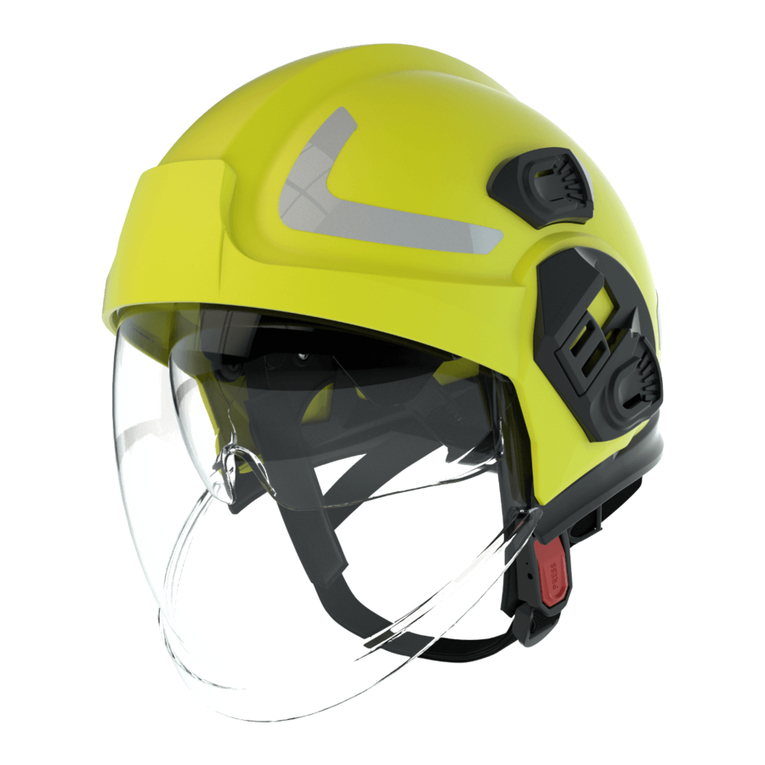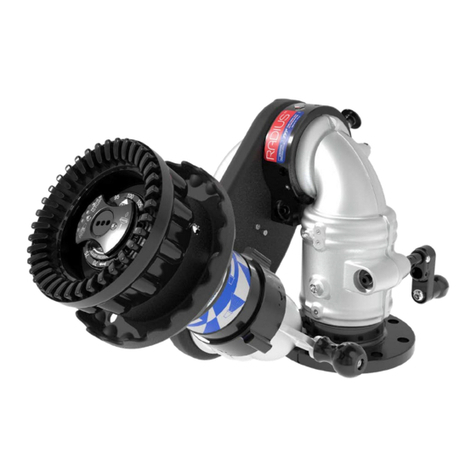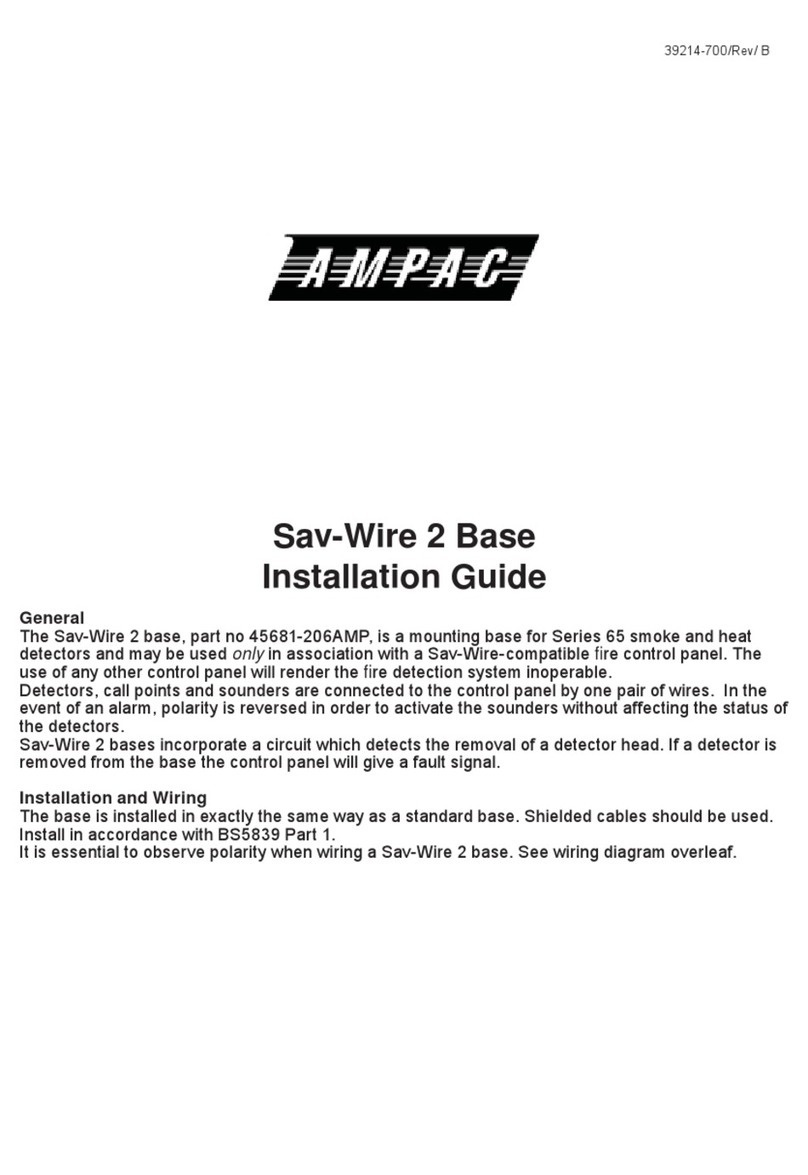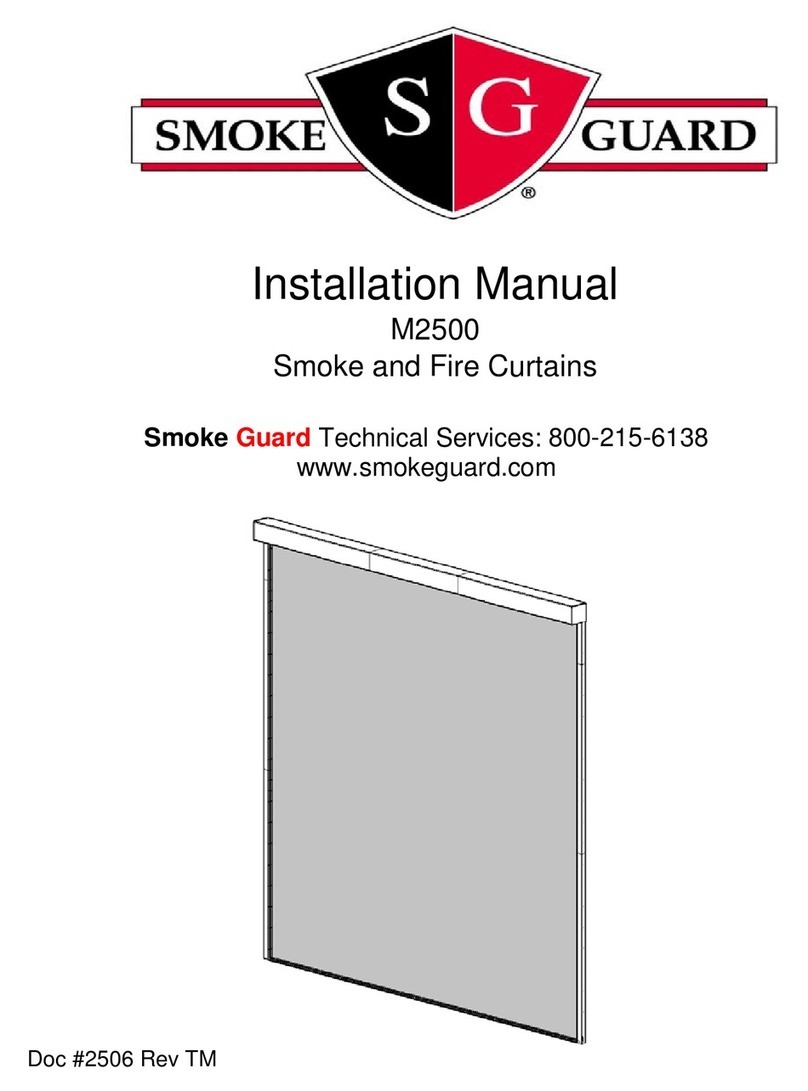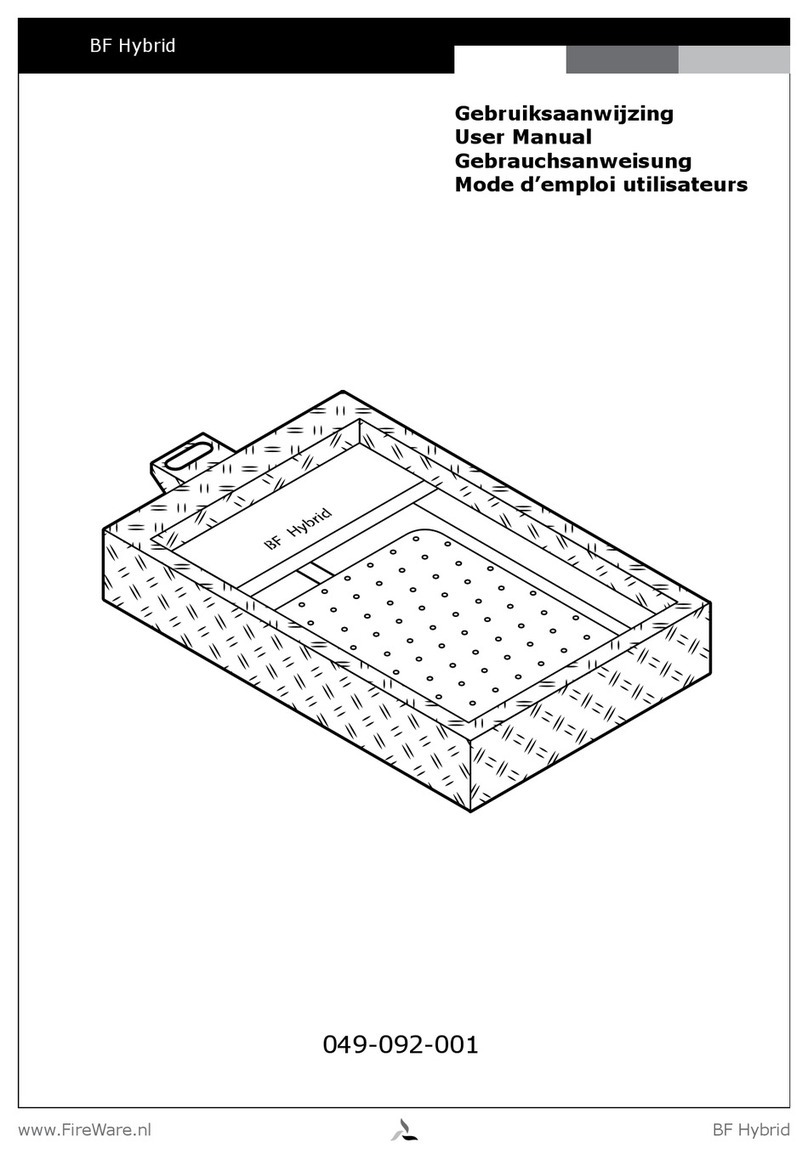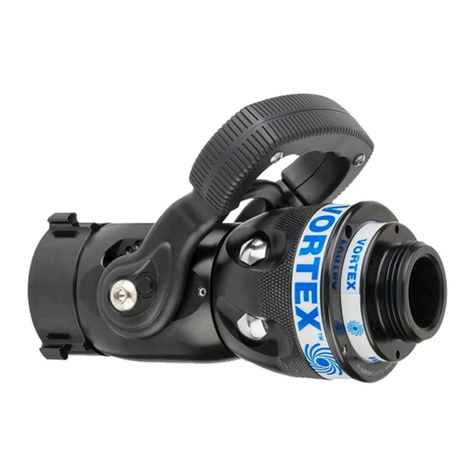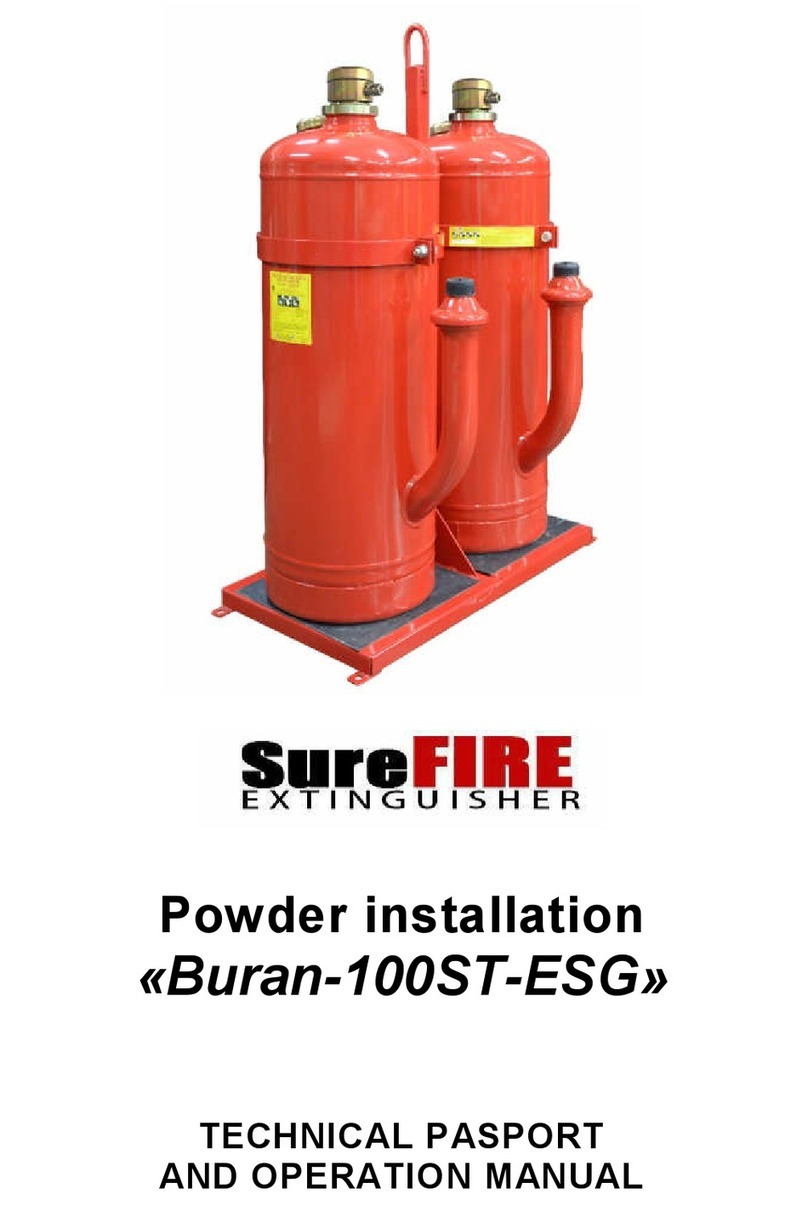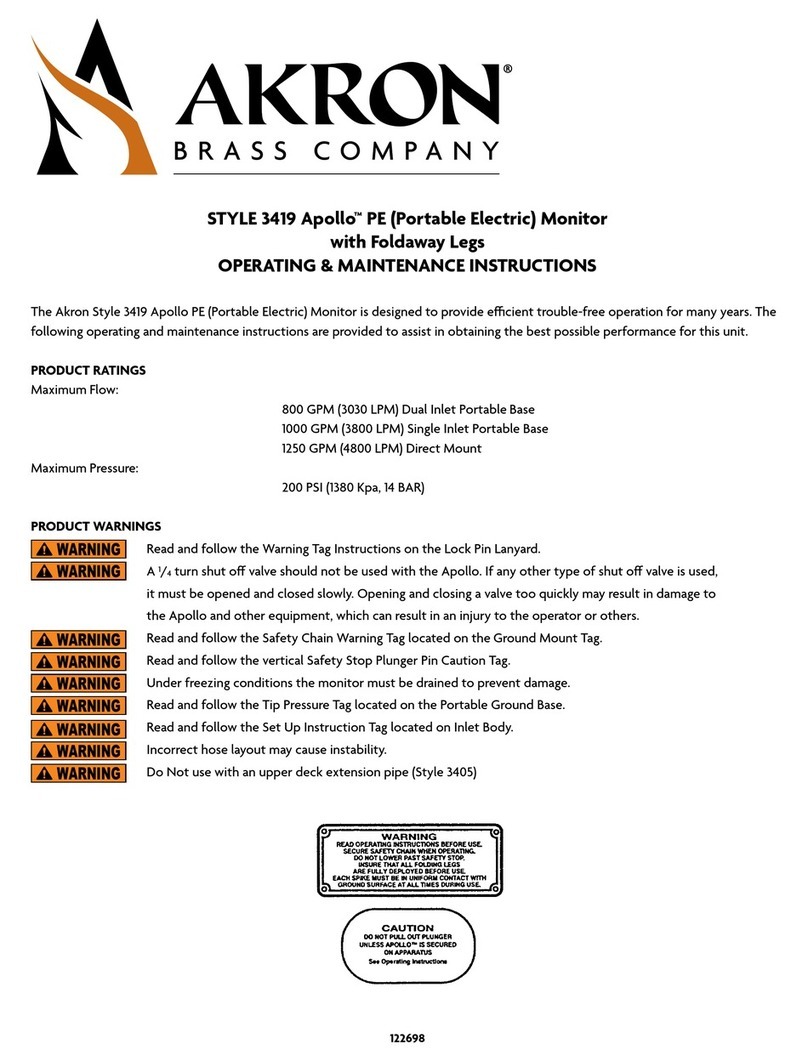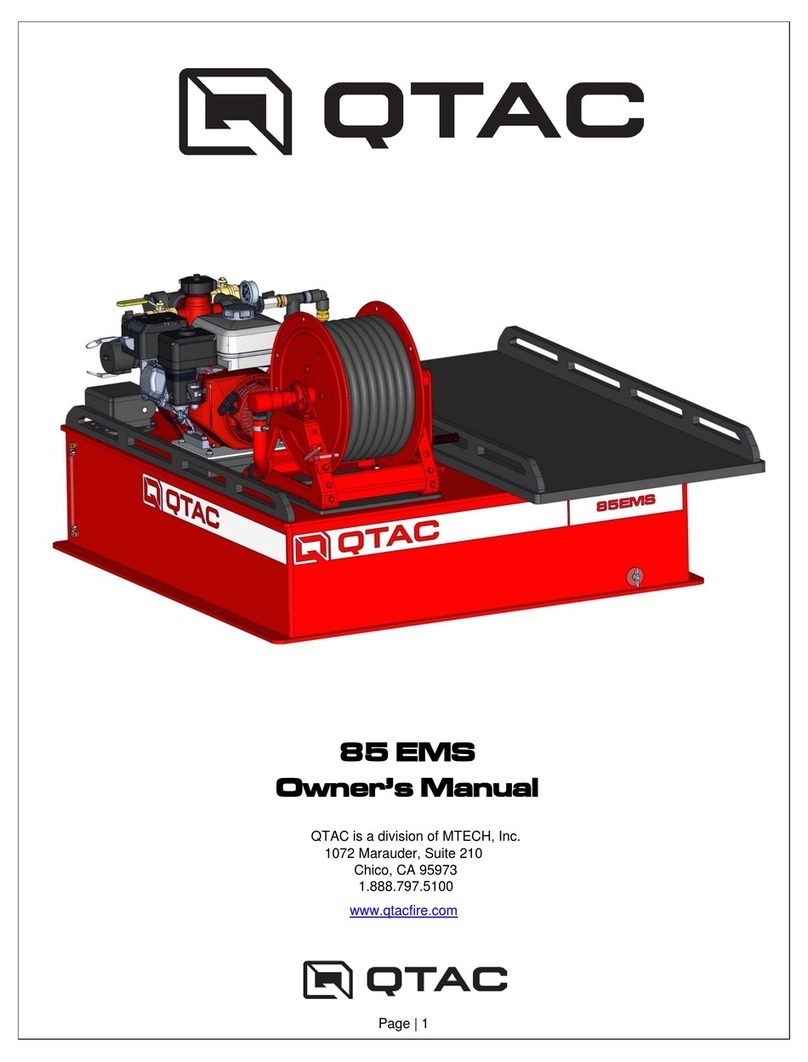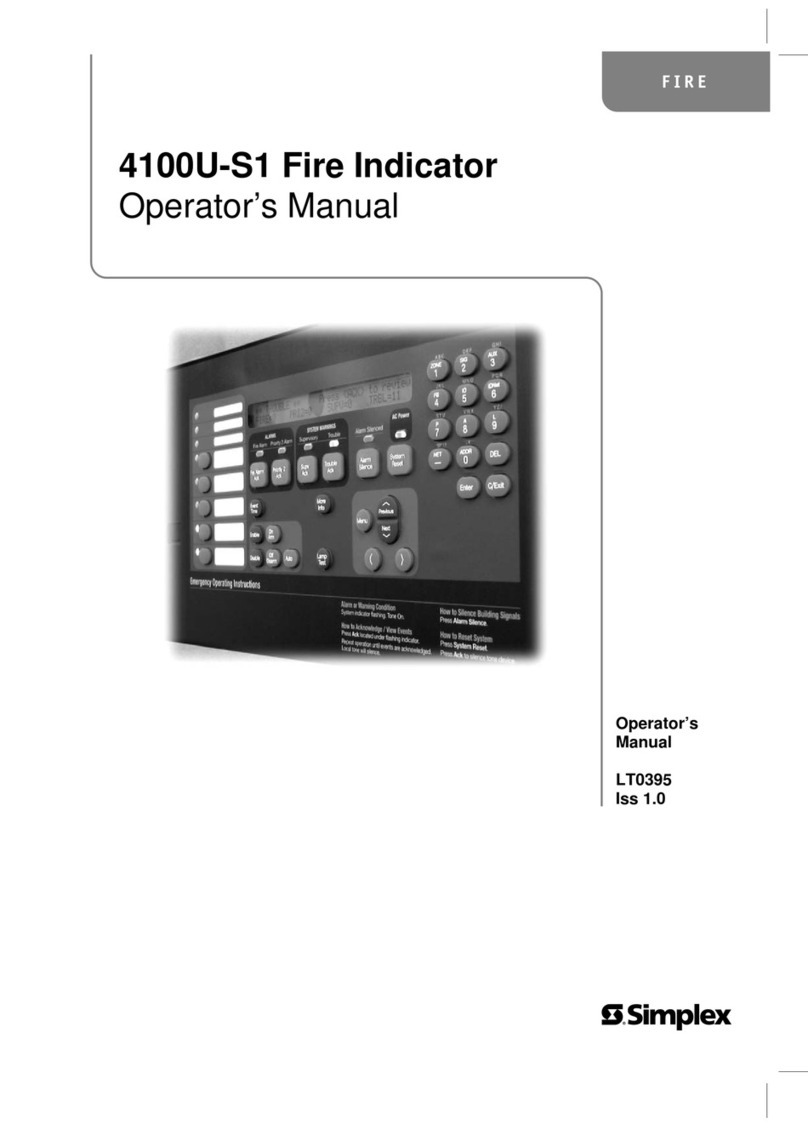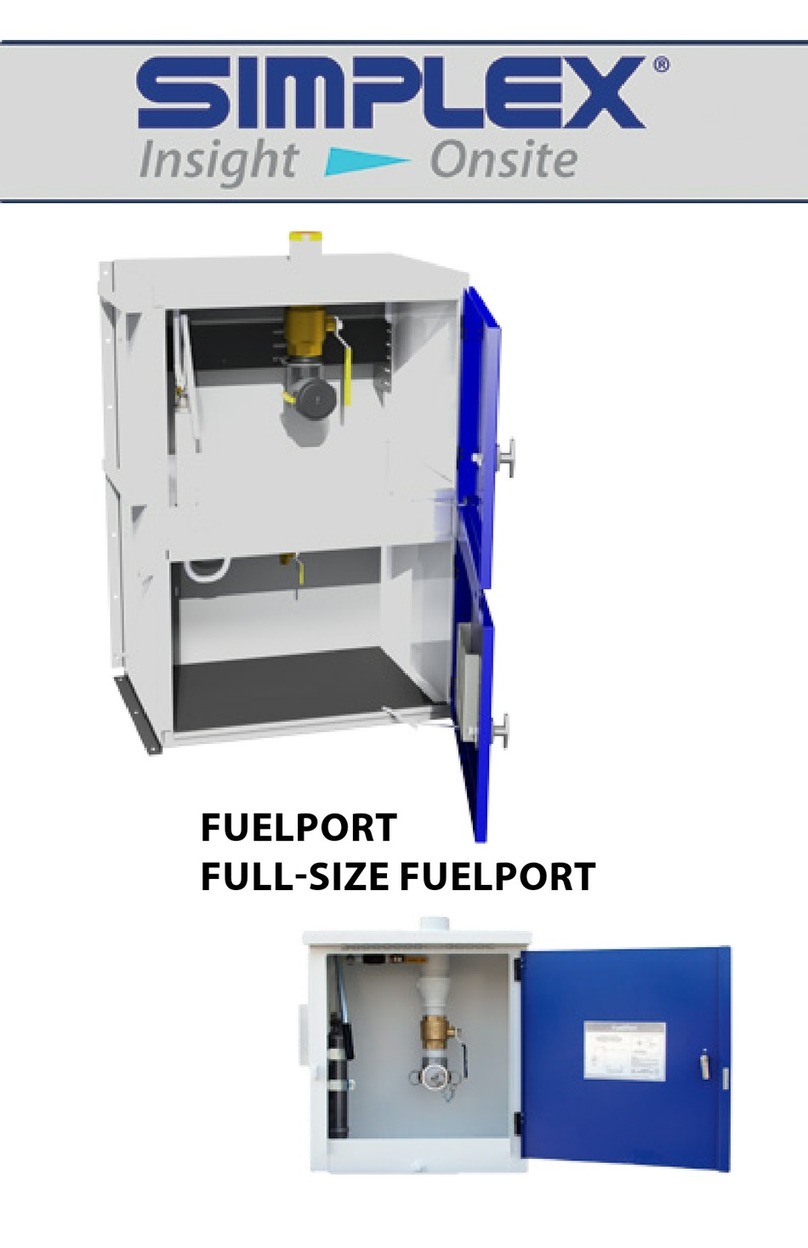FIRETRACE FSCK User manual

P a g e | 1
Firetrace Limited, Unit 22 Knightsdale Road, Ipswich IP1 4JJ
Tel. 01473 744090 Fax. 01473 744901
Email. info@firetrace.co.uk Visit our Website www.firetrace.co.uk
Firetrace™Commissioning Kit (FSCK)
Please read instructions carefully
prior to starting installation.
All systems
CE & Fully
PED
Compliant

P a g e | 2
Firetrace Limited, Unit 22 Knightsdale Road, Ipswich IP1 4JJ
Tel. 01473 744090 Fax. 01473 744901
Email. info@firetrace.co.uk Visit our Website www.firetrace.co.uk

P a g e | 3
Firetrace Limited, Unit 22 Knightsdale Road, Ipswich IP1 4JJ
Tel. 01473 744090 Fax. 01473 744901
Email. info@firetrace.co.uk Visit our Website www.firetrace.co.uk
System Overview.
The Firetrace™commissioning kit comprises of the following components;
Cylinder containing oxygen free nitrogen pressurized to 100bar
Valve and regulator
Flexi hose with adapter suited to Firetrace Systems
6mm Tube flaring tool FT0261
Trace detection tube cutter FT0127
2 x 6mm Spring Nuts FT1723-6/4
12mm Combination Spanner
13mm Combination Spanner
14mm Combination Spanner
17mm Combination Spanner
19mm Combination Spanner
Commissioning Instructions
It is recommended that engineer installing a Firetrace® system should be familiar with the
product prior to installation.
Firetrace® offer a free one day training course to familiarise engineers with the various types
of Firetrace® systems, their installation and commissioning procedure.
The salient points of installation are on the following pages.

P a g e | 4
Firetrace Limited, Unit 22 Knightsdale Road, Ipswich IP1 4JJ
Tel. 01473 744090 Fax. 01473 744901
Email. info@firetrace.co.uk Visit our Website www.firetrace.co.uk
Firetrace™Installation Instructions.
Cylinder
When installing the Firetrace™system it is important that a suitable cylinder location is
selected and that the cylinder is orientated correctly.
The cylinder location should ideally be in a clean area away from direct heat. The cylinder
should not be placed in a location where the ambient temperature is above 80 Degrees
centigrade.
The cylinder should be readily accessible to allow future servicing / inspections and as close as
practicable to the risk area.
The cylinder should be adequately fixed to a suitable load bearing surface.
Wherever possible the cylinder should be mounted vertically and in no circumstances should
the cylinder be positioned at an angle of more than 45 Degrees from vertical.
The cylinder gauge should face uppermost to aid inspection.
It is recommended wherever possible that Firetrace cylinders be mounted vertically.
Where vertical locating is not possible the systems can be mounted within 45° of
vertical.
As indicated in the above drawing when cylinders are fitted at an angle the
gauge must face uppermost.
MOST FIRETRACE SYSTEMS ARE NOT SUITABLE FOR
HORIZONTAL MOUNTING.
Cylinder Gauge
A free training course at our Ipswich facility is available to have a better understanding
of Firetrace installation and products. Please contact us for more details.

P a g e | 5
Firetrace Limited, Unit 22 Knightsdale Road, Ipswich IP1 4JJ
Tel. 01473 744090 Fax. 01473 744901
Email. info@firetrace.co.uk Visit our Website www.firetrace.co.uk
Direct Low Pressure Systems with Isolate Valve.
Where this is necessary the cylinder should be mounted in an area with good air flow and
care should be taken to avoid the hottest areas.
Suitable fixings should be utilised.
Below shows a typical Firetrace™ Direct Low Pressure system with Isolate Valve layout.
(FT0115) 6mm
(FT0180) 8mm
*
(FT1723-6/4) 6mm
(FT1723-8/6) 8mm
(FT0101/1) 6mm
(FT0101/1-8) 8mm
(FT0124)
optiona
l
(FT114)
(FT0178)
optiona
l
(FT0120/)
(FT0107)
(FT0172)
(FT0118) 6mm
(FT0118/2 c/w FT1511-8/6-1/8)
8mm
(FT0243) 6mm
FixiOptional port
for Discharge
confirmatioCo2
Discharge horn
(FT165)
FT0243/8) 8mm Fixing
Kit
(FT0164
)
Gromm
et
Isolate
Valve
(FT0117)
* FT0115 6mm Trace
detection tube to be
ordered
‘O’ Ring (FT0111)
End of Line Adapter
(use with
gauge, pressure switch or
blank)
Filling Adapter
Optional end of line
gauge
Audible
Alarm
Pressure
Switch
Direct Low Pressure
Valve
Anti Kink Tube
Nut Unit
Firetrace Detection
Tube
Plastic
cross
panel
adapter
Tube
attachments
DLP Dip
Tube
Cylinde
r
Bracket
Please Note
*
All Direct Low Pressure
Powder Systems are
fitted with 8mm Trace
Detection Tube
FT0180 8mm Trace
detection tube to be
ordered

P a g e | 6
Firetrace Limited, Unit 22 Knightsdale Road, Ipswich IP1 4JJ
Tel. 01473 744090 Fax. 01473 744901
Email. info@firetrace.co.uk Visit our Website www.firetrace.co.uk
TO COMMISSION DIRECT LOW PRESSURE
FIRETRACE SYSTEMS WITH ISOLATE VALVE
Warning Firetrace cylinders contain 10.5 bar pressure
This procedure should be read in conjunction with document 006 basic design layout for
Direct Low Pressure systems with Isolate Valve.
Do not turn valve FT0117 until system is fully commissioned
Locate cylinder and firmly secure with bracket provided
Connect red Trace detection tube, tighten silver nuts and secure with appropriate clips
Remove gauge FT0107 from end of line gauge adapter FT0118
Fit Schrader adapter FT0172 and pressurise to 12 Bar / 175 psi using a nitrogen bottle or air
pump.
Remove Schrader adapter FT0172 and refit gauge FT0107
Check gauge is reading mid-green (same as cylinder gauge) and leave system for a minimum
of ten minutes per metre of Trace detection tube to check for any leaks on the detection
tube.
When satisfied pressure is good and no leaks have occurred
open ball valve FT0117 slowly
System is now live
Optional FT0124 pressure switch can be fitted in spare gauge adapter
on head assembly or at end of line
Please note system will not operate with isolate valve
in closed position
Closed
Open

P a g e | 7
Firetrace Limited, Unit 22 Knightsdale Road, Ipswich IP1 4JJ
Tel. 01473 744090 Fax. 01473 744901
Email. info@firetrace.co.uk Visit our Website www.firetrace.co.uk
Indirect Low Pressure Systems
Where this is necessary the cylinder should be mounted in an area with good air flow and
care should be taken to avoid the hottest areas.
Suitable fixings should be utilised.
Below shows a typical Firetrace™ Indirect Low Pressure system layout.
Powder
Foam

P a g e | 8
Firetrace Limited, Unit 22 Knightsdale Road, Ipswich IP1 4JJ
Tel. 01473 744090 Fax. 01473 744901
Email. info@firetrace.co.uk Visit our Website www.firetrace.co.uk
TO COMMISSION INDIRECT LOW PRESSURE
FIRETRACE SYSTEMS
Warning Firetrace cylinders are pressurised to 10.5bar. Proceed with caution.
This procedure should be read in conjunction with typical Firetrace™ Indirect Low Pressure
system layout.
Do not turn valve FT0117 until system is fully commissioned
Locate cylinder and firmly secure with bracket provided
Connect Trace detection tube, tighten silver nuts and secure with appropriate clips
Remove gauge FT0107 from end of line gauge adapter FT0118
Fit Schrader adapter FT0172 and pressurise to 12 Bar / 175 psi using a Nitrogen Cylinder or
air pump
Remove Schrader adapter FT0172 and refit gauge FT0107
Check gauge is reading mid-green (same as cylinder gauge) mark the gauge and leave system
for a minimum of ten minutes per metre of Trace detection tube to check for any leaks on
the Detection tube.
Install FT0184 8mm diffuser pipe work, connect to cylinder using FT1050-8-1/4 stud. When
installation is complete, disconnect FT0184 from cylinder and fit blank plug.
When satisfied pressure is good and no leaks have occurred open Isolate valve FT0117 slowly.
Remove blank plug and reconnect FT0184 8mm discharge pipe work.
System is now live
Optional FT0124 pressure switch can be fitted in spare gauge adapter on head assembly or at end of
line
Please note system will not operate with isolate valve
in closed position
Closed
Open

P a g e | 9
Firetrace Limited, Unit 22 Knightsdale Road, Ipswich IP1 4JJ
Tel. 01473 744090 Fax. 01473 744901
Email. info@firetrace.co.uk Visit our Website www.firetrace.co.uk
Direct High Pressure Systems
Where this is necessary the cylinder should be mounted in an area with good air flow and
care should be taken to avoid the hottest areas.
Suitable fixings should be utilised.
Below shows a typical Firetrace™ Direct High Pressure system layout.

P a g e | 10
Firetrace Limited, Unit 22 Knightsdale Road, Ipswich IP1 4JJ
Tel. 01473 744090 Fax. 01473 744901
Email. info@firetrace.co.uk Visit our Website www.firetrace.co.uk
TO COMMISSION FIRETRACE DIRECT HIGH PRESSURE C0² SYSTEM
Warning Firetrace C0² & N² cylinders contain high-pressure gases
This procedure should be read in conjunction with document 008 basic design layout for Direct
High Pressure systems.
Do not turn valve FT0117/1 until system is fully commissioned
Locate cylinder and firmly secure with bracket provided
Connect red Trace detection tube, tighten silver nuts and secure with appropriate clips
Remove gauge FT0107/1 from end of line gauge adapter FT0118/1
Fit Schrader adapter FT0172 and pressurise to 17 Bar / 245 psi using a Nitrogen cylinder or
air pump
Remove Schrader adapter FT0172 and refit gauge FT0107/1
Check gauge FT0107/1 is reading mid-green and leave system for a minimum of ten minutes
per metre of Trace detection tube to check for leaks on Trace detection tube.
When satisfied pressure is good and no leaks have occurred open ball valve FT0117/1 slowly
System is now live
Optional pressure switch FT0124 can be fitted in spare gauge adapter on head assembly or end
of line
Please note system will not operate with isolate valve in closed position
Closed
Open

P a g e | 11
Firetrace Limited, Unit 22 Knightsdale Road, Ipswich IP1 4JJ
Tel. 01473 744090 Fax. 01473 744901
Email. info@firetrace.co.uk Visit our Website www.firetrace.co.uk
Indirect High Pressure Systems
Where this is necessary the cylinder should be mounted in an area with good air flow and
care should be taken to avoid the hottest areas.
Suitable fixings should be utilised.
Below shows a typical Firetrace™ Indirect High Pressure system layout.

P a g e | 12
Firetrace Limited, Unit 22 Knightsdale Road, Ipswich IP1 4JJ
Tel. 01473 744090 Fax. 01473 744901
Email. info@firetrace.co.uk Visit our Website www.firetrace.co.uk
TO COMMISSION INDIRECT HIGH PRESSURE
FIRETRACE SYSTEMS
Warning Firetrace CO2 & N2 cylinders contain high pressure .Proceed with caution.
Do not turn valve FT0117/1 until system is fully commissioned.
Do not remove outlet blanking cap until cylinder is properly secured.
This procedure should be read in conjunction with document 013 basic design layout for
Indirect High Pressure systems.
Do not turn valve FT0117/1 until system is fully commissioned
Locate cylinder and firmly secure with bracket provided
Connect Trace detection tube, tighten silver nuts and secure with appropriate clips
Remove gauge FT0107/1 from end of line gauge adapter FT0118/1
Fit Schrader adapter FT0172 and pressurise to 17 Bar / 245 psi using a Nitrogen cylinder or
air pump
Remove Schrader adapter FT0172 and refit gauge FT0107
Check gauge is reading mid-green and leave system for a minimum of ten minutes per
metre of Trace detection tube to check for leaks on the Trace detection tubing.
Install FT0184 8mm diffuser pipework, connect to cylinder using FT0167 Adaptor. When
installation is complete, disconnect FT0167 from cylinder and fit blank cap
When satisfied pressure is good and no leaks have occurred open Isolate valve FT0117 slowly.
Remove blank cap and reconnect FT0184 8mm discharge pipework.
System is now live
Optional FT0124 pressure switch can be fitted in spare gauge adapter on head assembly or at
end of line
Please note system will not operate with isolate valve
in closed position
CLOSED
OPEN

P a g e | 13
Firetrace Limited, Unit 22 Knightsdale Road, Ipswich IP1 4JJ
Tel. 01473 744090 Fax. 01473 744901
Email. info@firetrace.co.uk Visit our Website www.firetrace.co.uk
Firetrace™Automatic Detection Tubing
The Firetrace™Automatic Detection tubing is the key part of the system and acts as the
detector to activate the valve.
The correct installation of the tubing is important to achieve optimum performance from the
system.
The tubing should be mechanically protected outside the identified risk area and should
remain accessible to allow future servicing.
As heat rises, the Firetrace™tubing is most efficient when mounted directly above the risk.
The tubing will activate at approximately 120 Degrees Centigrade and care should be taken to
avoid attaching the tubing where temperatures above this are achieved during normal
operation.
It is recommended that the tube is a minimum of 150mm away from exceptionally hot
surfaces or fitted with additional sleeving to avoid false activation.
Firetrace Detection Tube and Discharge Pipe Work Routing
As the Firetrace™detection tube is flexible the exact tube route can vary from application to
application. The basis of the system design is to circumnavigate the risk area so that any
potential risks are covered. (see tube bending radius guide on page 15).
The discharge pipe work should be installed so an unimpeded flow is allowed. Bending of the
discharge tube should be done using pipe benders to avoid kinks. The discharge diffusers
should be located for maximum effectiveness on the fire.

P a g e | 14
Firetrace Limited, Unit 22 Knightsdale Road, Ipswich IP1 4JJ
Tel. 01473 744090 Fax. 01473 744901
Email. info@firetrace.co.uk Visit our Website www.firetrace.co.uk
Tube Fixings
The Firetrace™ detection tubing needs to be adequately fixed to retain its position and
withstand any possible vibration.
The tubing is a soft polymer and is susceptible to wear / chaffing when repeatedly rubbed
against a hard or sharp surface. The tubing should be protected where it passes through
holes.
The following photograph shows a “P-clip” fixing and “Tyrap” fixing with Kopex for protection
against abrasion.
Always leave a small loop of tubing adjacent to the cylinder. Whilst this should also be
secured it must be releasable to allow future servicing of the cylinder.
Where the tubing is installed with a group of other cables it must be positioned on the
underside of the loom and must never be located within the centre of the loom.

P a g e | 15
Firetrace Limited, Unit 22 Knightsdale Road, Ipswich IP1 4JJ
Tel. 01473 744090 Fax. 01473 744901
Email. info@firetrace.co.uk Visit our Website www.firetrace.co.uk
Tube bending radius
The Firetrace™tubing acts as the detector to activate the valve mechanism. It is imperative
that the tubing is not kinked or crushed and the following minimum bending radius must be
adhered to.
Should the tubing be kinked or damaged in anyway then the entire Firetrace system should be
replaced:
FT0115 Red Firetrace™tubing 6mm: Minimum bending radius 60mm
FT0180 Red Firetrace™tubing 8mm: Minimum bending radius 80mm

P a g e | 16
Firetrace Limited, Unit 22 Knightsdale Road, Ipswich IP1 4JJ
Tel. 01473 744090 Fax. 01473 744901
Email. info@firetrace.co.uk Visit our Website www.firetrace.co.uk
Connecting the Firetrace™ Tubing onto the fitting
All compression fittings must be secured in the following manner :
a) Cut the tube end ensuring the cut is clean and free from burrs. Check that no debris/ swarf
is left in the tube.
b) Place the nut over the end of the tube with its threaded section towards the end of the
tube.
c) Push the tube fully home into the body.
d) The nut should be tightened finger tight and then using a 12mm Spanner pinched up to
firm hand tightness
e) Slacken off the assembly and inspect end to ensure flange has formed correctly then
reconnect and tighten down to ensure an effective seal.
Method of Assembly
1. Tubing must be cut off square.
2. Insert tubing into tubing nut.
3. Offer the tubing to the fitting so that the tubing bottoms on the tubing stop.
(this requires a firm push if cold)
4. Hold the tubing in contact with the tubing stop and screw the tubing nut down
to the recommended torque. (torque = 5.7 Nm)
x
The use of a tube cutter (FT0127) is
recommended for an accurate cut of the
Trace Detection Tube.

P a g e | 17
Firetrace Limited, Unit 22 Knightsdale Road, Ipswich IP1 4JJ
Tel. 01473 744090 Fax. 01473 744901
Email. info@firetrace.co.uk Visit our Website www.firetrace.co.uk
Service & Maintenance
The Firetrace™systems can operate in a harsh environment and are occasionally subjected to
high temperatures and extreme vibration. It is essential that the systems are regularly
serviced to ensure their correct operation.
In order to comply with British Standard BS 5306 (section three) the following maintenance
tasks should be carried out periodically.
The British standard recommends that each system is visually inspected every 3 months and
then fully serviced at maximum intervals of 12 Months by a competent engineer.
All Dry Powder and Foam systems require discharge testing at maximum 5 Year intervals
Firetrace™Limited currently recommend that all systems are fully serviced
every 6 Months by a competent engineer.
Isolate the cylinder by means of the isolate valve. Remove discharge pipe work and fit blanking
cap(s) to the valve.
Drain trace detection tube by way of depressing schrader valve in the end of line adapter.
Inspect fume cabinet and ensure Firetrace™detection tubing is correctly installed and
protecting entire risk area. Check for signs of wear/damage and tighten or replace fixings as
necessary.
Locate cylinder and record size, type and serial number. Check date of manufacture and
record when discharge test is required.
Remove the cylinder, check weigh and *agitate contents. (Invert cylinder a few times until
powder feels free flowing)
Check external condition of cylinder. Replace if there is any sign of damage or wear.
Check gauge is facing upwards (if applicable) and that cylinder is installed as upright as
possible. Where necessary reposition cylinder or highlight any required modifications for
return visit.
Remove pressure switch (if applicable) Lubricate pressure switch O ring and replace switch.
Remove cylinder gauge and ensure correct operation. Lubricate O ring and replace.
Remove End of Line gauge and ensure correct operation. Lubricate O ring and replace
Record details and date of service on cylinder label. Replace cylinder into bracket and ensure it
is secured by clamp / Tyrap.
Remove gauge from End of Line, fit Schrader adapter and pressurise to 12 Bar / 175 psi using
a nitrogen cylinder or air pump.
Remove Schrader adapter, refit gauge, check gauge is reading mid-green, mark the gauge and
leave system for a minimum of 10 minutes per metre of trace detection tube.
When satisfied no leaks have occurred, open isolate valve slowly. System is now live.
Remove blanking cap(s) from valve and re-connect discharge pipe work.
*Dry Powder systems ONLY

P a g e | 18
Firetrace Limited, Unit 22 Knightsdale Road, Ipswich IP1 4JJ
Tel. 01473 744090 Fax. 01473 744901
Email. info@firetrace.co.uk Visit our Website www.firetrace.co.uk
Notes:

P a g e | 19
Firetrace Limited, Unit 22 Knightsdale Road, Ipswich IP1 4JJ
Tel. 01473 744090 Fax. 01473 744901
Email. info@firetrace.co.uk Visit our Website www.firetrace.co.uk

P a g e | 20
Firetrace Limited, Unit 22 Knightsdale Road, Ipswich IP1 4JJ
Tel. 01473 744090 Fax. 01473 744901
Email. info@firetrace.co.uk Visit our Website www.firetrace.co.uk
Issue 1 230712
Address:
Unit 22, Knightsdale Road,
Ipswich,
Suffolk.
IP1 4JJ
Telephone:
01473 744090
Facsimile:
01473 744901
Email:
Website:
www.firetrace.co.uk
Twitter:
@firetrace_uk
Table of contents
Other FIRETRACE Firefighting Equipment manuals
